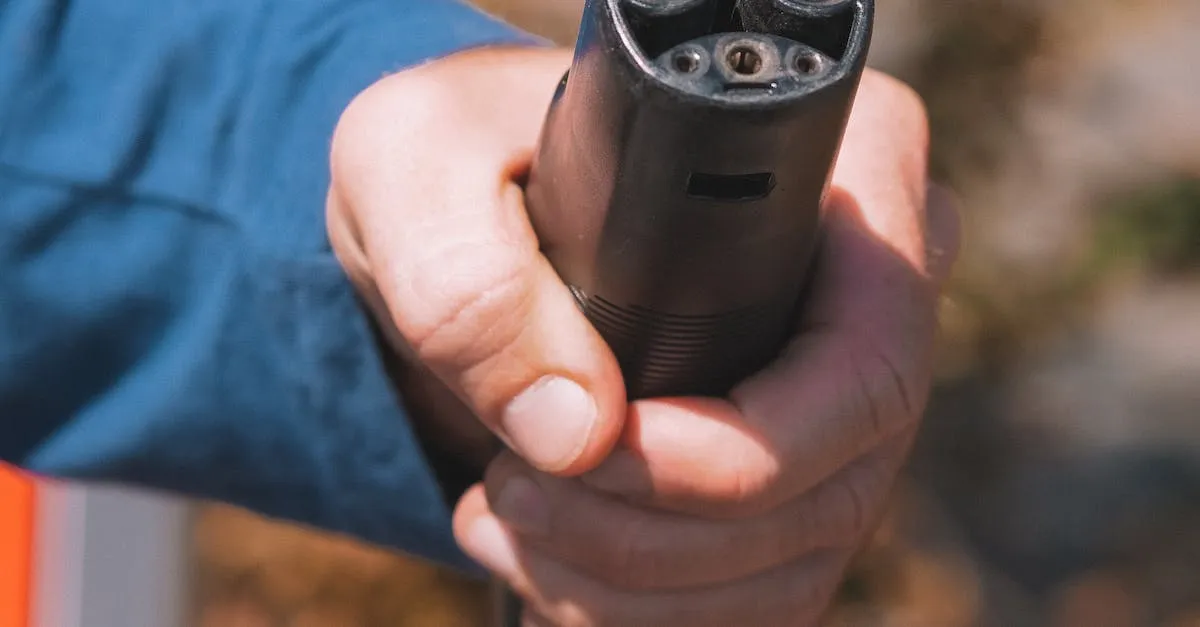What Makes A Gun California Compliant?
California has some of the strictest gun laws in the United States. If you own firearms in California or are looking to purchase guns in the state, it’s crucial to understand what features and modifications make a firearm legal and compliant with California gun laws. In this comprehensive guide, we’ll provide an overview of all the requirements and restrictions for California compliant guns.
California Assault Weapons Ban
The state of California has implemented strict regulations on firearms, particularly when it comes to assault weapons. These regulations aim to reduce the risk of gun violence and ensure public safety.
Understanding the California Assault Weapons Ban is crucial for gun owners and enthusiasts in the state.
Definition of assault weapons
In California, assault weapons are defined as firearms with specific features that make them more dangerous and suitable for military-style use. The state law categorizes firearms as assault weapons based on a combination of features, including the type of magazine capacity, pistol grip, folding stock, flash suppressor, and grenade launcher.
The list of banned firearms is extensive and continuously updated to adapt to new firearm technologies.
Banned features
The California Assault Weapons Ban prohibits the possession, sale, transfer, or manufacture of firearms with certain features. These features include the ability to accept detachable magazines outside the pistol grip, thumbhole stocks, forward pistol grips, and flash suppressors.
The ban also restricts the use of high-capacity magazines, limiting them to a maximum capacity of 10 rounds.
According to a report by the Giffords Law Center, California has one of the strictest assault weapons bans in the country, and its comprehensive approach aims to prevent the availability of military-style firearms to the general public.
Grandfathering of weapons
While California has implemented a ban on certain assault weapons, there are provisions for individuals who legally owned these firearms before the ban came into effect. These firearms are known as “grandfathered” or “pre-ban” weapons.
Gun owners who possessed these firearms before the ban can register them with the state and continue to lawfully possess them.
Compliance with detachable magazine locks
One way to make a gun California compliant is by using detachable magazine locks. These locks prevent the quick removal of magazines, ensuring compliance with the state’s assault weapons regulations. Firearms equipped with detachable magazine locks are considered “fixed magazine” firearms and are exempt from certain restrictions imposed on assault weapons.
According to a study conducted by the University of California, Davis, the use of detachable magazine locks has become a popular method for gun owners to comply with California’s assault weapons regulations. This allows them to legally keep their firearms while adhering to the state’s strict laws.
California Handgun Roster
The California Handgun Roster is a list of handguns that are deemed “safe” and “reliable” by the California Department of Justice. It was created in 2001 under the Unsafe Handgun Act, which requires all handguns sold in California to be certified and listed on the roster.
The main purpose of the roster is to ensure that handguns available to California residents meet certain safety standards.
Overview of the roster
The roster includes a wide variety of handguns from different manufacturers, including popular brands such as Glock, Smith & Wesson, and Sig Sauer. These handguns have undergone rigorous testing to ensure that they meet California’s safety requirements, including drop safety tests and firing tests.
Gun manufacturers must submit their handguns to the California Department of Justice for testing and certification. Once a handgun is certified, it is added to the roster and can be legally sold in California.
Handguns on the roster are assigned a unique model number and are listed with their specific features, such as barrel length, capacity, and safety mechanisms.
Exceptions to the roster
There are certain exceptions to the California Handgun Roster. One notable exception is the “single-shot exemption,” which allows Californians to purchase handguns that are not on the roster. Under this exemption, a handgun that is not listed on the roster can be legally sold in California if it is modified to be a single-shot handgun.
Another exception is for law enforcement officers, who are allowed to purchase and possess handguns that are not on the roster. This exemption is granted due to the nature of their work and the need for specific firearms that may not be available on the roster.
Adding guns to the roster
Adding guns to the California Handgun Roster is a complex and lengthy process. Manufacturers must submit their handguns for testing and pay a fee for each handgun model they want to certify. The testing process involves evaluating the handgun’s safety features, reliability, and compliance with California’s strict gun laws.
However, in recent years, the number of new handguns being added to the roster has decreased significantly. This has led to criticism from gun rights advocates, who argue that the roster limits the choices available to Californians and makes it difficult for manufacturers to comply with the requirements.
For more information on the California Handgun Roster and the specific handguns listed, you can visit the official website of the California Department of Justice: https://oag.ca.gov/firearms.
Magazine Restrictions
When it comes to California compliant guns, one of the key aspects is the restriction on magazine capacity. The state has implemented strict regulations to limit the number of rounds a magazine can hold.
10 round limit
California law prohibits the possession or sale of magazines that can hold more than 10 rounds of ammunition. This means that firearms sold in California must be equipped with magazines that have a maximum capacity of 10 rounds.
The purpose of this restriction is to reduce the potential lethality of mass shootings and increase public safety.
Exceptions for tubular magazines
While the 10-round limit applies to most firearms, there are exceptions for firearms that use tubular magazines. Tubular magazines are commonly found in lever-action rifles and some shotguns. These magazines are integral to the firearm and cannot be easily removed or replaced.
As a result, firearms with tubular magazines are not subject to the 10-round limit.
Ban on large-capacity grandfathering
California law also prohibits the grandfathering of large-capacity magazines. This means that even if a person legally possessed large-capacity magazines prior to the implementation of the magazine restrictions, they are no longer allowed to possess or use them.
The state’s aim is to gradually reduce the number of large-capacity magazines in circulation and prevent their use in future crimes.
For more detailed information about California’s magazine restrictions and other gun compliance requirements, you can visit the official website of the California Department of Justice: https://oag.ca.gov/firearms.
Ammunition Purchase Requirements
Background checks for ammo
In California, purchasing ammunition is subject to strict regulations to ensure safety and prevent unauthorized individuals from obtaining ammunition. One of the key requirements is the background check.
Just like when purchasing a firearm, individuals who want to buy ammunition must undergo a background check through the California Department of Justice’s Automated Firearms System (AFS) to determine their eligibility.
The background check process involves a review of criminal records, mental health records, and restraining orders. This helps to prevent individuals with a history of violence or those who pose a danger to themselves or others from accessing ammunition.
It’s important to note that individuals who already possess a valid California Certificate of Eligibility (COE) or have a valid California driver’s license or identification card with a Real ID designation are exempt from the background check requirement.
Caliber restrictions
Another aspect of California’s ammunition purchase requirements is the restriction on certain calibers. The state has banned the sale and possession of certain high-capacity magazines, defined as those capable of holding more than 10 rounds of ammunition.
As a result, purchasing ammunition for firearms that are compatible with these high-capacity magazines may be limited or subject to additional scrutiny.
Additionally, California law prohibits the sale of armor-piercing ammunition, which is defined as ammunition designed primarily to penetrate metal or armor. This restriction is in place to protect law enforcement officers and public safety.
Individuals who possess firearms chambered in restricted calibers or those looking to purchase ammunition for such firearms must ensure compliance with these regulations to avoid legal consequences.
Mail order ammo ban
One significant requirement that affects ammunition purchases in California is the ban on mail order ammunition. As of July 1, 2019, individuals cannot have ammunition delivered directly to their doorstep.
Instead, ammunition must be purchased in person from a licensed ammunition vendor or transferred through a licensed ammunition vendor.
This ban aims to regulate the sale and transfer of ammunition, ensuring that only eligible individuals have access to it. It also facilitates the enforcement of background checks and other requirements, as ammunition vendors are responsible for verifying the eligibility of buyers before completing a sale.
While this ban may inconvenience some gun owners, it is an important measure in California’s efforts to promote responsible and secure ammunition transactions.
For more information about California’s ammunition purchase requirements, you can visit the official website of the California Department of Justice’s Firearms Division: https://oag.ca.gov/firearms.
Firearm Registration and Usage
When it comes to owning and using firearms in California, there are certain regulations and requirements that need to be followed. One of the key aspects of firearm ownership in the state is the process of registration.
In California, both handguns and long guns need to be registered with the appropriate authorities. This ensures that there is a record of who owns these firearms and helps law enforcement agencies keep track of the firearms in circulation.
Handgun Registration
Handgun registration is a crucial step for individuals who want to legally own and use a handgun in California. According to the California Department of Justice, all handgun owners are required to register their handguns within 60 days of acquiring them. This includes both new and used handguns.
The registration process involves filling out a form and submitting it along with the required fee to the Department of Justice. Once registered, the owner will receive a unique serial number for their handgun, which must be engraved on the firearm for identification purposes.
Long Gun Registration
While handgun registration is a well-established requirement in California, long gun registration is a relatively recent development. In 2014, California introduced a law that required the registration of certain long guns, including rifles and shotguns.
However, as of July 1, 2018, the requirement for long gun registration has been temporarily suspended due to ongoing legal challenges. It is important to stay updated on the latest developments regarding long gun registration in California.
State Permit Requirements
In addition to firearm registration, California also has state permit requirements for certain types of firearms. For example, individuals who wish to carry a concealed handgun in public must obtain a Concealed Carry Weapon (CCW) permit.
The process for obtaining a CCW permit involves meeting specific criteria, including completing a background check, completing a firearms training course, and demonstrating “good cause” for needing a CCW permit.
The issuance of CCW permits is at the discretion of local law enforcement agencies, and the requirements can vary from county to county.
It is important for gun owners in California to familiarize themselves with the specific laws and regulations pertaining to firearm registration and usage. The California Department of Justice’s website provides detailed information and resources for individuals seeking to comply with these requirements.
Conclusion
In summary, for a firearm to be California compliant, it must meet stringent requirements on banned features, be certified on the state Handgun Roster, abide by magazine limits and ammunition regulations, and be properly registered. Staying up to date on California’s complex and changing gun laws is crucial for gun owners in the state.








